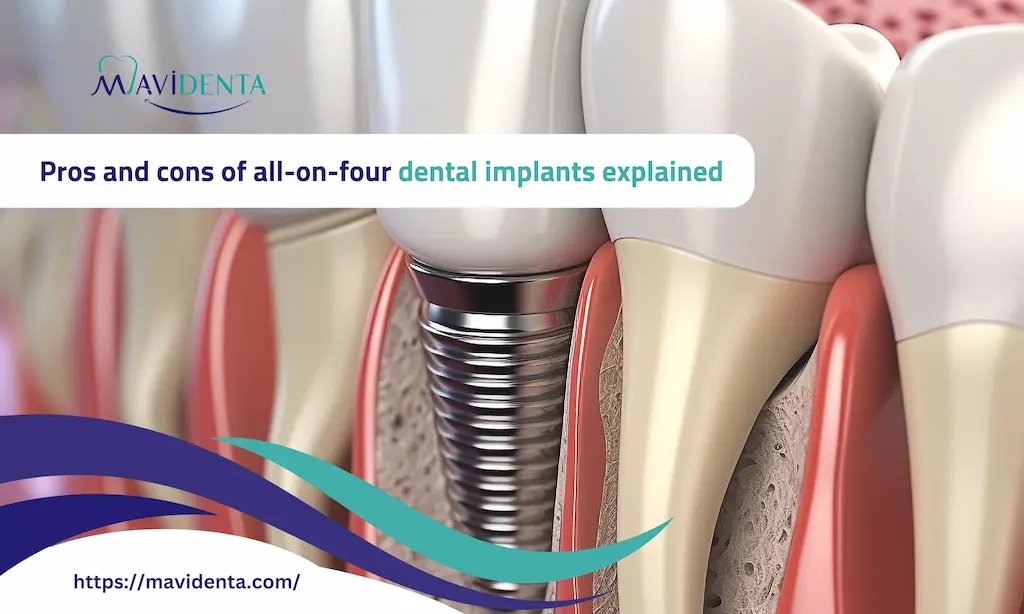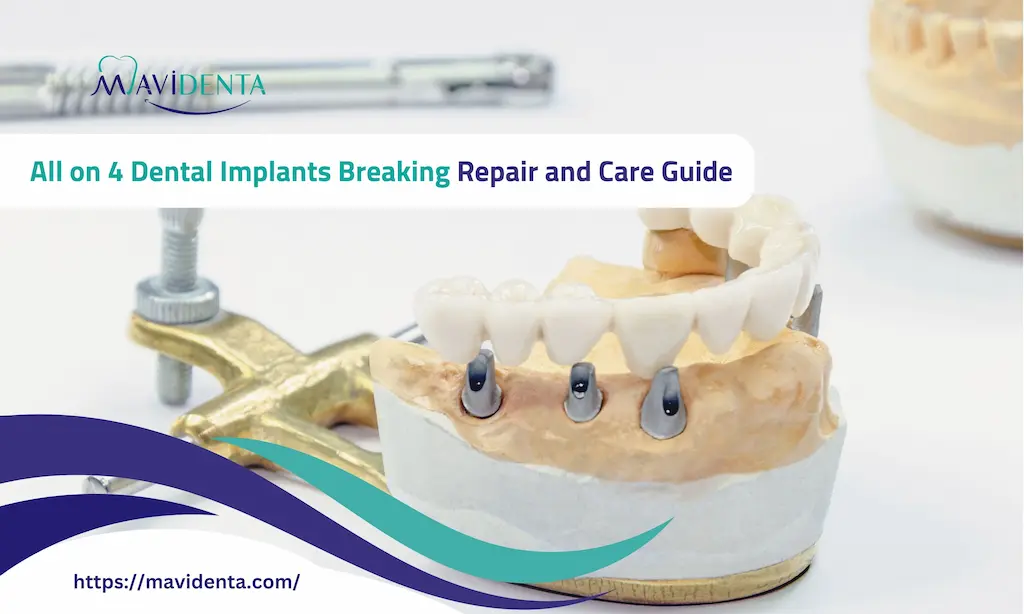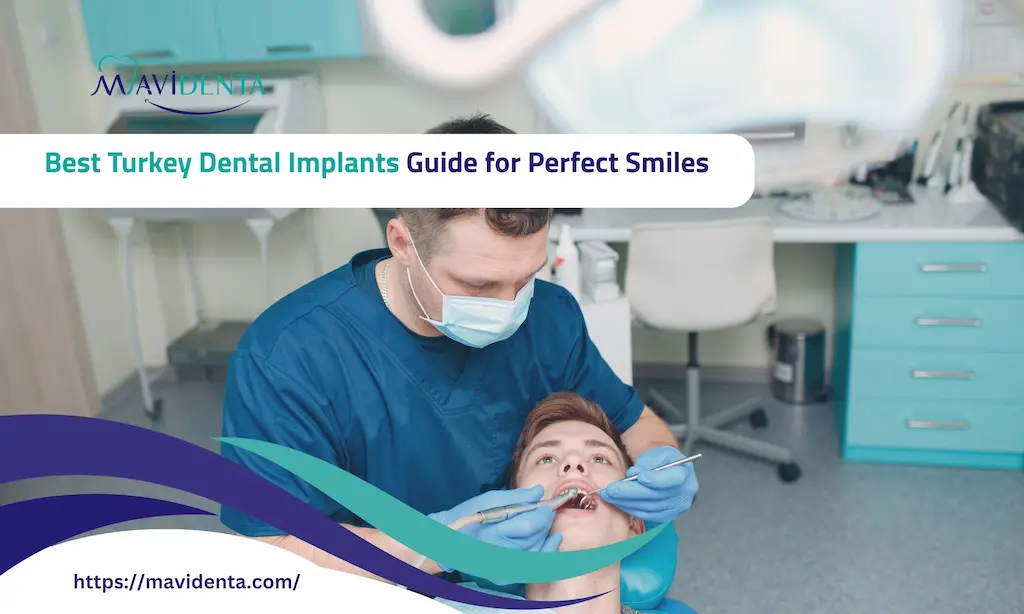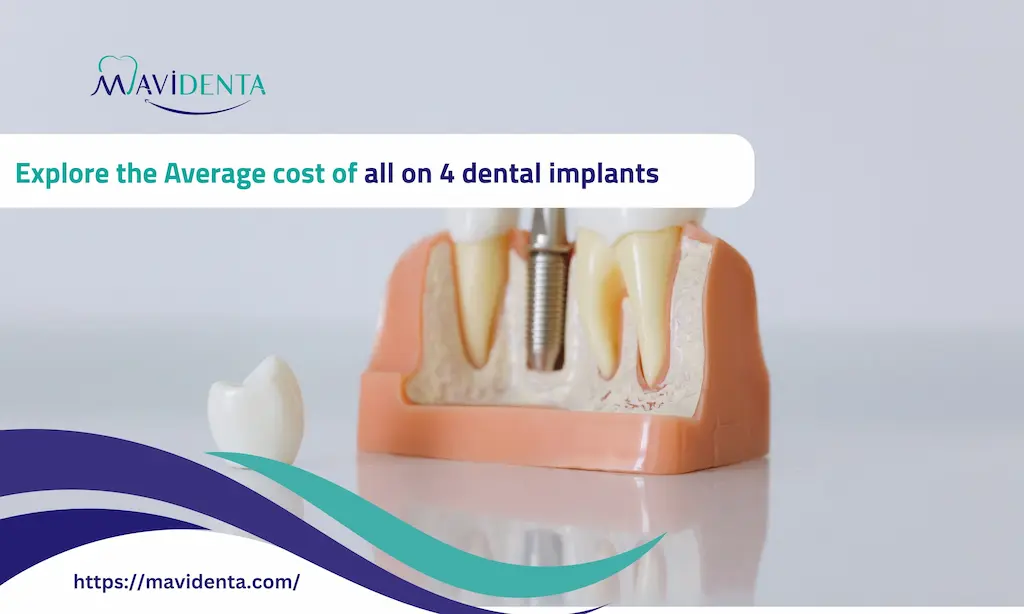Dental impression is one of the traditional methods used by dentists in this specialty, as it helps them obtain the desired tooth or jaw size with high accuracy. It is worth noting that there are different types of dental impressions, and despite the ease of this procedure, many people express concern and wonder whether can dental impressions pull teeth out.
It is worth noting, thanks to the development of modern technology, that there are prosthetic methods for dental impressions, such as digital dental impressions, so through our article today we will learn about can dental impressions pull teeth out.
Dental Impressions and tooth extraction:-

If you are wondering whether dental impressions can pull teeth out
Here is the answer. A dental impression is an initial impression of the hard and soft tissues of the mouth, from which the final impression (or mold) is made.
They are made using containers designed to roughly fit the jaws (the container in which the mouth impression is taken), and impression materials are designed to be liquid or semi-solid when first mixed and then placed in the mold.
After this, they solidify quickly (usually a few minutes, depending on the material ), leaving an imprint of the jaws on it. The impressions and prototypes molded from it are used in many areas of dentistry, including:
- Prosthodontics (e.g. making dentures and crowns).
- Orthodontics and restorative dentistry (e.g. making impressions of teeth prepared to receive indirect crown restorations (made outside the mouth) such as crowns or bridges).
- Cosmetics Maxillofacial (prosthetic rehabilitation of intraoral and extraoral defects due to injury, congenital disabilities, surgical removal of tumours).
- Therapeutic purposes (fillings).
- Diagnosis of disease or condition and oral, maxillofacial and maxillofacial surgery inside and outside the mouth (e.g. implants Sunni).
The type of instrument required to make the impression and the area it covers depends on the clinical indications (the purpose of the impression).
A properly made dental impression will capture part or all of a person’s teeth and surrounding oral cavity structures. A dental impression creates an impression of the teeth and soft tissue, which can then be used to make a dental mold.
Molds are used in pathology diagnosis, patient records, treatment planning, custom mold manufacturing, dentures, crowns or other prosthetics and orthodontics.
The impression is made by placing fluidized viscous materials inside the mouth through dental impression molds. It becomes solid and flexible, and when removed from the mouth, it forms a detailed negative impression of the teeth.
Materials used for dental impressions are sodium alginate, polyether, silicone, condensation-cured silicone, and additive-cured silicone, such as polyvinyl siloxane. Historically, gypsum of Paris, zinc oxide eugenol, and agar were used.
The Basics in Tooth Extraction:-
In addition, can dental impressions pull teeth out? Tooth extraction is the process of extracting a tooth, medically called “exodontias”. Many reasons require extraction operations, including teeth in which caries have become so infested that restoring or restoring the decayed tooth to its natural state is no longer possible.
Damaged or unhealthy wisdom teeth may also be extracted, and finally, the doctor may have to extract some permanent teeth to place orthodontic fixtures.
There are two main types of tooth extraction: simple and surgical:
- Simple extraction: They are performed on visible teeth in the mouth, usually under local anaesthesia, and only require tools to lift and grip the tooth’s visible part. An elevator and dental clamps are used to raise the teeth; then, the tooth is moved with deliberate movements according to the nature of the tooth in certain directions until the ligaments surrounding the tooth are torn and the supporting dental bone expands to make the tooth relatively free to move enough to extract.
- When teeth are extracted with clamps, the doctor does not use pressure on the tooth so that it does not break the bone but rather works to make the tooth and the clamp connect as one tool.
- Surgical extraction: This is resorted to when teeth are not easily accessible, either because they have broken below the gum line or have not fully developed. Here, extractions always require surgical incisions. In a surgical extraction, the doctor lifts the soft tissue covering the teeth and bone and may also scrape out a little of the jawbone surrounding the tooth using a drilling tool or osteotome.
The tooth is often divided into several parts during surgery to make extracting it easier. These operations are usually performed under local anesthesia.
Read more about the Best Place to Get Your Teeth Done in Turkey Guide
Can Dental Impressions Pull Teeth Out?
Dental impressions typically won’t pull out healthy teeth. The material is designed to be set comfortably around your teeth. However, if you have a tooth that’s already very loose due to gum disease or injury, there is a small chance it could come out during the impression removal. If you’re concerned about loose teeth, talk to your dentist beforehand. They may recommend digital scanning technology, which avoids putting pressure on your teeth altogether.
Speaking of can dental impressions pull teeth out The steps for tooth extraction are divided into 3 steps, in the following order:
The first step:
The doctor listens to the patient’s complaint and asks about his medical history, which includes the medications that the patient takes for any health problems, and any diseases that the patient suffers from, such as:
- Heart disease and high blood pressure.
- Diabetes.
- Thyroid diseases.
- Liver or kidney disease.
- Installation of an artificial joint.
- Installing valves in the heart.
- Autoimmune diseases.
The second step:
Take an X-ray film of the tooth to evaluate its condition. Knowing the number of roots and their shape, in some cases, especially in some cases, we can resort to imaging other types of dental X-rays.
Such as panoramas and CT scans, as they are more clarifying of some details regarding the number of roots and the location of the tooth to be extracted among the important nerves.
The third step:
Tooth extraction is divided into:
Simple extraction: Simple extraction cases include those cases in which the tooth or molar is fully visible in the mouth. It does not usually take a long time and is under the influence of local anesthesia.
The doctor injects the patient with an anesthetic to numb the nerve supplying the tooth and the surrounding area, then begins to extract it. As soon as the patient feels numbness in the desired area.
The patient does not feel any pain during the removal of the tooth, but only feels some pressure, as the doctor uses a lever to relax the tooth, cut the ties surrounding it, and then dry it to pick it up and remove it.
Surgical extraction: Surgical extraction cases require more time than simple cases, and are performed with local anesthesia, or some cases may require complete anesthesia.
The idea of surgical extraction depends on making a small hole in the gum, and perhaps removing part of the bone surrounding the tooth so that we can reach it, then extracting it with traditional surgical tools, followed by simple medical suturing.
Explore the Implant Tooth Healing Time
The Process of Taking Dental Impressions:-
In addition, can dental impressions pull teeth out? Digital dental impressions are taken in the dentist’s office according to a set of steps that include preparation, photography, processing, and making use of the impression after that.
1-Preparation:
During a visit to the dentist in order to make a digital impression, the dentist performs a comprehensive examination of the mouth, teeth and gums, and performs a dental cleaning.
Removes plaque and tartar from the teeth, and ensures that the gums are safe from gingivitis, bacteria and swelling in order to achieve the optimal condition required for making the implants, which edition will be built
digital on it.
2-Photography:
After examining and cleaning the teeth and gums, the doctor inserts a scanner consisting of a digital camera or a laser-based camera in order to photograph the teeth.
A completely safe laser beam is used on the teeth and gums, which scans and records all the details present in the teeth, gums and mouth and stores the digital images or videos taken. on the computer in order to process it.
3-Processing digital images or videos:
The images and videos are processed using a digital computer program known as a modeling program. With the help of the modeling programs, the doctor creates a completely identical digital model.
The shape of the patient’s mouth and teeth in order to design the required fixtures based on it
on him.
4-Send the images to the laboratory:
After completing dental imaging obtaining sufficient data and processing it using computer modeling programs.
The dentist sends the images to the laboratory in order to manufacture the dental implants necessary for treatment. The doctor can design the fixtures in his clinic if the clinic has a CAD CAM modeling machine.
The Use of Dental Impressions in Dentistry:-
Speaking of can dental impressions pull teeth out? Dental impressions and the casts they produce are used in various areas of dentistry:
- Diagnosis and action plan.
- Dental industry such as (denture manufacturing).
- orthodontics.
- Restorative dentistry (such as taking an impression of the prepared tooth to create a crown in a laboratory).
- Oral and maxillofacial surgery (such as dental implants).
Explore the Best Dental Implant Clinic in Istanbul.
Misconceptions and Concerns:-
One of the doctor’s duties is to spread health awareness among members of society and present what has been discovered, updated, or invalidated, based on recent scientific research, because it may be among the false beliefs of our time, which were true and widespread in the past. Such as the old false belief that the Earth is flat. Since we seek positive feedback from all members of society, we will give a correct answer to every misconception in orthodontics.
- The wrong belief in delaying the start of orthodontic treatment until puberty and after the eruption of permanent teeth
Answer: Baby teeth may be replaced by permanent teeth, but many children have a disturbance in the eruption of permanent teeth at the time or in their eruption in the correct location of the jaw, for various reasons, including:
1-Heredity, bad habits
Therefore, when children reach the age of 7 years, it is preferable to take them to consult an orthodontist with the aim of:
- Evaluation of the masticatory system:
- Teeth, jaws, temporomandibular joint, muscles, and tissues surrounding the teeth.
2-Assessment of vital functions
From speaking, swallowing, chewing, and breathing. Find bad habits: Like sucking a finger.
As a result of this consultation, the doctor adopts a preventive or predictive monitoring plan, gives the necessary instructions to maintain oral and dental health and hygiene, and develops an appropriate treatment plan.
- The misconception is that straightening teeth and jaws is done only by using “Price” adhesive
The answer: “Price” is one of the many materials used in orthodontics of teeth and jaws. In many cases, orthodontic treatment is performed without adhesive braces, such as:
- Functional appliances, treated with clear plastic appliances.
- The misconception that wisdom teeth must always be extracted
The answer: The wisdom tooth is like any other tooth in the jaws. It is preserved, treated, or extracted based on clinical medical data and rules based on the person’s condition.
Accusing the wisdom tooth of causing overlapping of the front teeth goes back to one of the old widespread misconceptions, which unfortunately still prevails. Even among doctors who do not keep up with modern medicine and its discoveries.
- The misconception is that braces are for the cosmetic aspect of teeth only
Answer: Orthodontic treatment is not limited to the cosmetic aspect of the teeth, but also works on:
- Correcting dental bites, and the relationship between the upper and lower jaws.
- Correcting the functions of chewing, speech, and swallowing.
- Participation in treatment with other specialties in dentistry and surgery.
- It contributes to giving a harmonious external appearance to the face with a beautiful smile, which gives self-confidence and openness to others, and individual production becomes greater.
- The misconception is that the duration of orthodontic treatment is long
- Answer: The duration of orthodontic treatment may be short, within months, or may extend to years, and this relates to many matters, including:
What relates to the practicing physician: his experience in diagnosis, his method of treatment, and his skill in using various orthodontic materials and tools.
Among the recently used ones, we mention: implants and devices that emit mild vibrations that help speed up the response of the tissue around the tooth to move the teeth in less time than before.
Among them are what relates to the patient: his age, gender, cooperation, and commitment to the instructions required of him, such as adhering to appointments and maintaining the appliances in his mouth according to the doctor’s instructions.
- The misconception is that orthodontic treatment always deteriorates over time.
The answer: The teeth are connected to the jawbone by means of elastic ligaments. These ligaments can, for many reasons, such as bad habits, pull the tooth to its original place before treatment or to another place.
Therefore, the patient must respond to all the doctor’s instructions during and after treatment, and he must make visits.
An annual visit to the doctor’s office after the end of orthodontic treatment to ensure the continuity of the results of orthodontic treatment.
- The misconception that bleeding gums is related to brushing teeth
Answer: There are correct methods that must be followed to clean the teeth and mouth in addition to the regular brush and toothpaste.
A special brush must be used if there is an orthodontic device fixed on the teeth or there are spaces between them.
- The misconception that orthodontics does not benefit adults
Answer: Orthodontics for all ages. The recent development of new materials and methods has given orthodontic treatment for adults many options. Among the modern materials, we mention:
- The braces are made of ceramic or transparent crystal, with the possibility of attaching the braces to the invisible lingual side.
- There are also mobile devices made of clear plastic, or what is known as Invisalign.
- The misconception that the cost of orthodontic treatment is high
The answer: The difficult economic situation in general, and the increasing number of people who do not have a professional conscience or a human conscience, have led to this belief.
These people, who do not have the right to practice the medical profession, or may even be doctors without specialization, speculate at prices that are not compatible with their medical condition.
Their goal is to exploit the patient’s trust or ignorance, on whom calamity falls upon him after the passage of time when he discovers that his condition has worsened or The treatment period was extended without result.
Also check: Finance Teeth Turkey.
Alternatives to Dental Impressions:-

Speaking of can dental impressions pull teeth out? A digital dental impression is a digital model of the shape of the teeth and jaw that is obtained by photographing the patient’s mouth and teeth using a scanner consisting of a digital camera that captures images.
And then processing the information through a special program to create a digital impression of the teeth. Digital dental impressions are the newest and easiest technology of its kind, as it saves the patient and the doctor a lot of effort compared to traditional impressions.
Read more about Dental Implant Cleaning Cost: A Comprehensive Guide.
Types of digital dental impressions:
There are two types of digital editions: editions that rely on digital photos and editions that rely on digital videos.
1-Digital photos
In this mode, pictures of the mouth and teeth are taken using a laser or scanner, and the data is stored on the computer in the form of digital images.
In this mode, the dentist can obtain a series of separate pictures.
For teeth, jaws and gums
2-Digital videos
In this mode, the mouth, jaws, and teeth are photographed continuously to produce a continuous video clip that includes all the details of the teeth, gums, and jaws.
In both cases, digital images or videos are processed for the purpose of creating a virtual model that perfectly matches the patient’s mouth and teeth.
Benefits of editions digital teeth:
Digital impressions offer a large number of benefits that make dental procedures, treatment, and cosmetic dentistry easier, more efficient, and of better quality:
1-Increase efficiency and productivity:
Digital impressions increase efficiency in dental operations and cosmetic dentistry, as they are more accurate in estimating dimensions and measurements.
And allows different prostheses to be tested virtually before manufacturing them, which increases the efficiency of dental prostheses and makes them more suitable for the patient.
It also increases productivity due to reducing the time required to take and process the impression and saving effort in making measurements and designing fixtures manually, as digital impressions allow designing fixtures immediately using CAD-CAM technology.
2-Improve print quality :
Digital impressions are of better quality as measurements in these impressions are taken using a laser or scanning rather than manual measurement or inaccurate measurements resulting from the thickness of the alginate material used in traditional impressions.
3-Reduce the margin of error:
When the impressions are taken digitally, the margin of error in designing the fixtures is much smaller.
The measurement is done using a laser that can differentiate between very precise measurements, and a machine designs the fixtures exactly as they are in the virtual model based on the impression.
digital.
4-Better user experience and more comfortable:
When the efficiency and speed in manufacturing and designing various dental implants increase, and the error rate and extreme accuracy in the measurements and sizes of the implants are reduced.
Dental treatments and cosmetic dentistry will be more comfortable for the patient and will achieve much better results.
5-Reduce the number of dentist visits:
Thanks to digital impressions, the number of visits to the dentist can be reduced to one time, because taking the impression and creating the digital model of the fixtures and designing them does not take more than 45 minutes, while it may take weeks and require several visits using traditional methods.
Conclusion
At the end of the text, dental impressions are one of the methods that dentists use, especially during the installation of orthodontics, to determine the correct tooth size.
As can dental impressions pull teeth out, there is no need to worry about this procedure. All you have to do is relax a little for 3 minutes and the matter will be over.
You can also use Alternatives to dental impressions, such as digital dental impressions that use 3D imaging technology.
FAQ
1. Can dental impressions really pull out a tooth?
In most cases, dental impressions cannot pull out a healthy tooth. The impression material is soft when placed and gently removed after it sets. However, if a tooth is already loose due to gum disease, trauma, or mobility, there is a small chance it could come out during removal.
2. Why do some people worry about dental impressions pulling teeth?
People often worry because the impression material holds tightly around the teeth when it sets. This can feel like it might “tug” the teeth out, but in reality, it only molds around them. The risk only exists if the tooth is already unstable or at risk of falling out naturally.
3. Are dental impressions safe for patients with loose teeth?
Yes, but extra caution is needed. Dentists usually check for mobility before starting impressions. If teeth are too loose, the dentist may recommend digital dental impressions instead, as they do not place physical pressure on the teeth.
4. What is the safest alternative if I’m worried about dental impressions pulling my teeth?
The safest modern alternative is digital impressions using an intraoral scanner. This method captures accurate 3D images of the teeth and gums without using impression trays or putty, making it completely risk-free for loose teeth.








